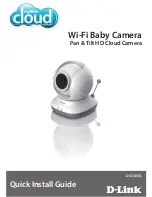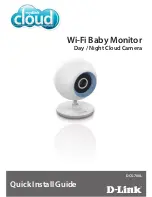
Introduction
Thank you for purchasing the OMRON MIT3 Automatic Blood Pressure Monitor.
Your new blood pressure monitor uses the oscillometric method of blood pressure
measurement. This means the monitor detects your blood movement through your
brachial artery and converts the movements into a digital reading. An oscillometric
monitor does not need a stethoscope so the monitor is simple to use.
Intended Use
This device is a digital monitor intended for use in measuring blood pressure and
pulse rate in adult patient population. The device detects the appearance of
irregular heartbeats during measurement and gives a warning signal with the
measurement result.
Please read this instruction manual thoroughly before using the device.
Please keep for future reference. For specific information about your own blood
pressure, CONSULT YOUR PHYSICIAN.
Important Safety Information
Warning: Indicates a potentially hazardous situation which, if not avoided,
could result in death or serious injury.
(General Usage)
DO NOT adjust medication based on measurement results from this blood
pressure monitor. Take medication as prescribed by your physician. Only a
physician is qualified to diagnose and treat High Blood Pressure.
The monitor is not intended to be a diagnostic device.
Consult your physician before using the device for any of the following
conditions: common arrhythmias such as atrial or ventricular premature beats or
atrial fibrillation, arterial sclerosis, poor perfusion, diabetes, pregnancy,
pre-eclampsia, renal diseases.
Note that PATIENT motion, trembling, shivering may affect the measurement
reading.
Do not use the device on the injured arm or the arm under medical treatment.
Do not apply the arm cuff on the arm while on an intravenous drip or blood
transfusion.
Consult your physician before using the device on the arm with an arterio-venous
(A-V) shunt.
Do not use the device with other medical electrical (ME) equipment
simultaneously.
Do not use the device in the area of HF surgical equipment, MRI, or CT scanner,
or in an oxygen rich environment.
The air tube or the AC adapter cable may cause accidental strangulation in
infants.
Contains small parts that may cause a choking hazard if swallowed by infants.
(AC Adapter (optional) Usage)
Do not use the AC adapter if the device or the power cord is damaged. Turn off
the power and unplug the power cord immediately.
Plug the AC adapter into the appropriate voltage outlet. Do not use in a
multi-outlet plug.
Never plug in or unplug the power cord from the electric outlet with wet hands.
Caution: Indicates a potentially hazardous situation which, if not avoided,
may result in minor or moderate injury to the user or patient or
damage to the equipment or other property.
(General Usage)
Always consult your physician. Self-diagnosis of measurement results and
self-treatment are dangerous.
Consult your physician before using the device for any of the following
conditions:
• If you have had a mastectomy.
• Do not take measurements more than necessary. It may cause bruising due to
blood flow interference.
• People with severe blood flow problems or blood disorders as cuff inflation can
cause bruising.
Remove the arm cuff if it does not start deflating during the measurement.
Do not use this device on infants or persons who cannot express their intentions.
Do not use the device for any purpose other than measuring blood pressure.
Use only the approved arm cuff for this device. Use of other arm cuffs may result
in incorrect measurement results.
Do not use a mobile phone or other devices that emit electromagnetic fields near
the device. This may result in incorrect operation of the device.
Do not disassemble the monitor or arm cuff. This may cause an inaccurate
reading.
Do not use in a location with moisture, or a location where water may splash on
the device. This may damage the device.
Do not use the device in a moving vehicle (car, airplane).
Read “If your systolic pressure is more than 210 mmHg” of this instruction
manual, if your systolic pressure is known to be more than 210 mmHg. Inflating
to a higher pressure than necessary may result in bruising where the cuff is
applied.
(AC Adapter (optional) Usage)
Fully insert the power plug into the outlet.
When disconnecting the power plug from the outlet, do not pull the power cord.
Be sure to pull from the power plug safely.
When handling the power cord, take care not to do the following:
Wipe the dust off from the power plug.
Unplug monitor when not in use.
Disconnect the power plug before cleaning.
Use only an OMRON AC adapter designed for this device. Use of unsupported
adapters may damage and/or may be hazardous to the device.
(Battery Usage)
Do not insert the batteries with their polarities incorrectly aligned.
Use only 4 “AA” alkaline or manganese batteries with this device. Do not use
other types of batteries. Do not use new and used batteries together.
Remove the batteries if the device will not be used for three months or more.
General Precautions
• Do not forcibly crease the arm cuff or the air tube excessively.
• Do not press the air tube while taking a measurement.
• To unplug the air plug, pull on the air plug at the connection with the monitor, not
the tube itself.
• Do not drop the monitor or subject device to strong shocks or vibrations.
• Do not inflate the arm cuff when it is not wrapped around your arm.
• Do not use the device outside the specified environment. It may cause an
inaccurate reading.
• Read and follow the “Important information regarding Electro Magnetic
Compatibility (EMC)” in the “6. Specifications”.
• Read and follow the “Correct Disposal of This Product” in “6. Specifications” when
disposing of the device and any used accessories or optional parts.
1. Know Your Device
Contents:
Monitor, arm cuff, instruction manual, storage case, battery set
Monitor:
Arm cuff:
Display:
1.1 Display symbols
Irregular Heartbeat Symbol (
)
When the monitor detects an irregular
rhythm two or more times during the
measurement, the irregular heartbeat
symbol will appear on the display with
the measurement values.
An irregular heartbeat rhythm is defined
as a rhythm that is 25% less or 25%
more than the average rhythm detected
while the monitor is measuring the
systolic and diastolic blood pressure.
If the irregular heartbeat symbol displays with your measurement results, we
recommend you consult your physician. Follow the directions of your
physician.
Cuff Wrap Guide Symbol (
/
)
If the cuff was wrapped too loosely, it may cause unreliable values. If the
wrapping of cuff is too loose, the cuff wrap guide symbol
appears.
Otherwise
appears. This is the function which is used as an aid in
determining if the cuff is wrapped snugly enough.
Blood pressure Level Indicator
Blood pressure level indicator will light up between
the systolic blood pressure and the diastolic blood
pressure. If your systolic or diastolic pressure is
above the standard range (135 mmHg for the
systolic blood pressure and/or 85 mmHg for the
diastolic blood pressure), the heartbeat symbol will
flash when the measurement result is displayed.
2013 ESH/ESC Guidelines for the management of arterial hypertension
Recent research suggests that the following values can be used as a guide to
high blood pressure for measurements taken in office or at home.
1.2 Before Taking a Measurement
To help ensure an accurate reading, follow these directions:
1. Avoid bathing, drinking alcohol or caffeine, smoking, exercising and eating
for 30 minutes before taking a measurement. Rest for at least 15 minutes
before taking the measurement.
2. Stress raises blood pressure. Avoid taking measurements during stressful
times.
3. Measurements should be taken in a quiet place.
4. Remove tight-fitting clothing from your arm.
5. Sit on a chair with your feet flat on the floor. Rest your arm on a table so
that the arm cuff is at the same level as your heart.
6. Remain still and do not talk during the measurement.
7. Keep a record of your blood pressure and pulse readings for your
physician. A single measurement does not provide an accurate indication
of your true blood pressure. You need to take and record several readings
over a period of time. Try to measure your blood pressure at the same time
each day for consistency.
2. Preparation
2.1 Battery Installation
1.
Remove the battery cover.
2.
Insert 4 “AA” batteries as
indicated in the battery
compartment.
3.
Replace the battery cover.
Notes:
• When the low battery symbol (
) appears on the display, turn the monitor
off, then replace all batteries at the same time. Long life alkaline batteries
are recommended.
• The measurement values continue to be stored in memory even after the
batteries are replaced.
• The supplied batteries may have a shorter life.
• Dispose of the device, components and optional accessories according to
applicable local regulations. Unlawful disposal may cause environmental
pollution.
2.2 Setting the Date and Time
Set the monitor to the correct date and time before taking a measurement for
the first time.
1.
Press the
button.
2.
Push
or
to change the year
Push
button to confirm the year and then the month flashes. Repeat the
same steps to change the month, day, hour, and minute.
3.
Press the START/STOP button to turn the monitor off.
Notes:
• If the batteries have been replaced, the date and time setting will need to be
reset.
• If the date and time are not set, “-:--” appears during or after measurement.
3. Using the Device
3.1 Applying the Arm Cuff
Remove tight-fitting clothing or tight rolled up sleeve from your left upper arm.
Do not place the arm cuff over thick clothes.
1.
Insert the air plug into the air jack
securely.
2.
Wrap the arm cuff firmly in
place around your left upper
arm.
The bottom edge of the arm cuff
should be 1 to 2 cm above the elbow.
Air tube is on the inside of your arm
and aligned with your middle finger.
3.
Secure closed with the
fabric fastener.
Notes:
• When you take a measurement on the right
arm, the air tube will be at the side of your
elbow. Be careful not to rest your arm on the
air tube.
• The blood pressure can differ between the right arm and the left arm, and
the measured blood pressure values can be different. OMRON recommends
to always use the same arm for measurement. If the values between both
arms differ substantially, please check with your physician which arm to use
for your measurements.
3.2 How to Sit Correctly
To take a measurement, you need to be
relaxed and comfortably seated, under
comfortable room temperature. Avoid
bathing, drinking alcohol or caffeine,
smoking, exercising or eating 30 minutes
before taking a measurement.
• Sit on a chair with your feet flat on the floor.
• Sit upright with your back straight.
• Sit with your back and arm being supported.
• The arm cuff should be placed on your arm at
the same level as your heart.
3.3 Taking a Measurement
Notes:
• To stop a measurement, press the START/STOP button once to release the
air in the arm cuff.
• Remain still and quiet while taking a measurement.
1.
Press the START/STOP button.
The arm cuff will start to inflate automatically.
2.
Remove the arm cuff.
3.
Press the START/STOP button to turn the monitor off.
The monitor automatically stores the measurement result in its memory.
It will automatically turn off after 2 minutes without any operations.
Note: Wait 2-3 minutes before taking another measurement. Waiting between
measurements allows the arteries to return to the condition prior to
taking a measurement.
Using the Guest Mode
No measurement values are stored in the memory when the guest mode is
selected.
1.
Press and hold the START/STOP
button for more than 3 seconds.
The Date/Time display will disappear.
2.
Release the START/STOP button when the Date/Time display
turns off.
The arm cuff will start to inflate automatically.
DO NOT adjust medication based on measurement results from this blood
pressure monitor. Take medication as prescribed by your physician. Only a
physician is qualified to diagnose and treat High Blood Pressure.
This monitor is not intended to be a diagnostic device.
Always consult your physician. Self-diagnosis of measurement results and
self-treatment are dangerous.
Read “If your systolic pressure is more than 210 mmHg” of this instruction
manual, if your systolic pressure is known to be more than 210 mmHg.
Inflating to a higher pressure than necessary may result in bruising where
the cuff is applied.
3.4 Using the Memory Function
The monitor automatically stores the results up to 60 sets.
Notes:
• If the memory is full, the monitor will delete the oldest value.
• When viewing the measurement value taken without setting the date and
time, “-:--” is displayed instead of the date and time.
To View the Measurement Values Stored in Memory
1.
Press the
button.
The Memory number appears for a second
before the pulse rate is displayed.
The newest set is numbered “1”.
Note: The cuff wrap guide result appears on
the display with the measurement
values.
2.
Press the
or
button to view the values stored in memory.
:
To view the older values
:
To view the more recent values
To Delete All the Values Stored in Memory
1.
Press the Memory button, while the memory symbol (
)
appears.
2.
While holding the
button
down, press the START/
STOP button for more than
3 seconds.
Note: You cannot partially delete the values stored in the memory.
All values will be deleted.
Do not damage.
Do not break it.
Do not tamper with it.
Do not forcibly bend or pull.
Do not twist.
Do not bundle during use.
Do not pinch.
Do not place under heavy objects.
Automatic Blood
Pressure Monitor
Model MIT3
Instruction Manual
IM-HEM-7270-E-01-03/2014
5344804-0A
A. Display
B. Memory button
C. START/STOP button
D. Up/Down buttons
E. Date/Time setting button
F.
Battery compartment
G. AC adapter jack
(for optional AC adapter)
H. Air jack
L.
Systolic blood pressure
M. Diastolic blood pressure
N. Low battery symbol
O. Cuff wrap guide symbol
P.
Heartbeat symbol
( 1. Flashes during measurement.
2. If flashing after measurement
complete indicates blood pressure
out of recommended range.)
Q. Memory symbol
R. Date/Time display
S. Irregular heartbeat symbol
T.
Blood pressure level indicator
U. Deflation symbol
V. Pulse display / Memory number
Office
Home
Systolic Blood Pressure
140 mmHg
135 mmHg
Diastolic Blood Pressure
90 mmHg
85 mmHg
F
H
G
A
E
B
D
C
D
I
K
J
I.
Arm cuff (Arm circumference 22 - 42 cm)
J.
Air plug
K. Air tube
L
M
N
Q
R
O
P
T
U
V
S
Irregular Heartbeat
Normal Heartbeat
Pulse
Blood pressure
Blood pressure
Short Long
Pulse
Minute
Change
Confirm
Change Confirm
Change Confirm
Change Confirm
Change Confirm
Year
Month
Day
Hour
: Forward
: Back
1 - 2 cm
Cuff Wrap Guide Symbol
START
INFLATE
DEFLATE
COMPLETE
If your systolic pressure is more than 210 mmHg
After the arm cuff starts to inflate, press and hold the START/STOP
button until the monitor inflates 30 to 40 mmHg higher than your
expected systolic pressure.
Notes:
• The monitor will not inflate above 299 mmHg.
Inflating to a higher pressure than necessary may result in bruising
where the arm cuff is applied.
Alternating date/time
display




















